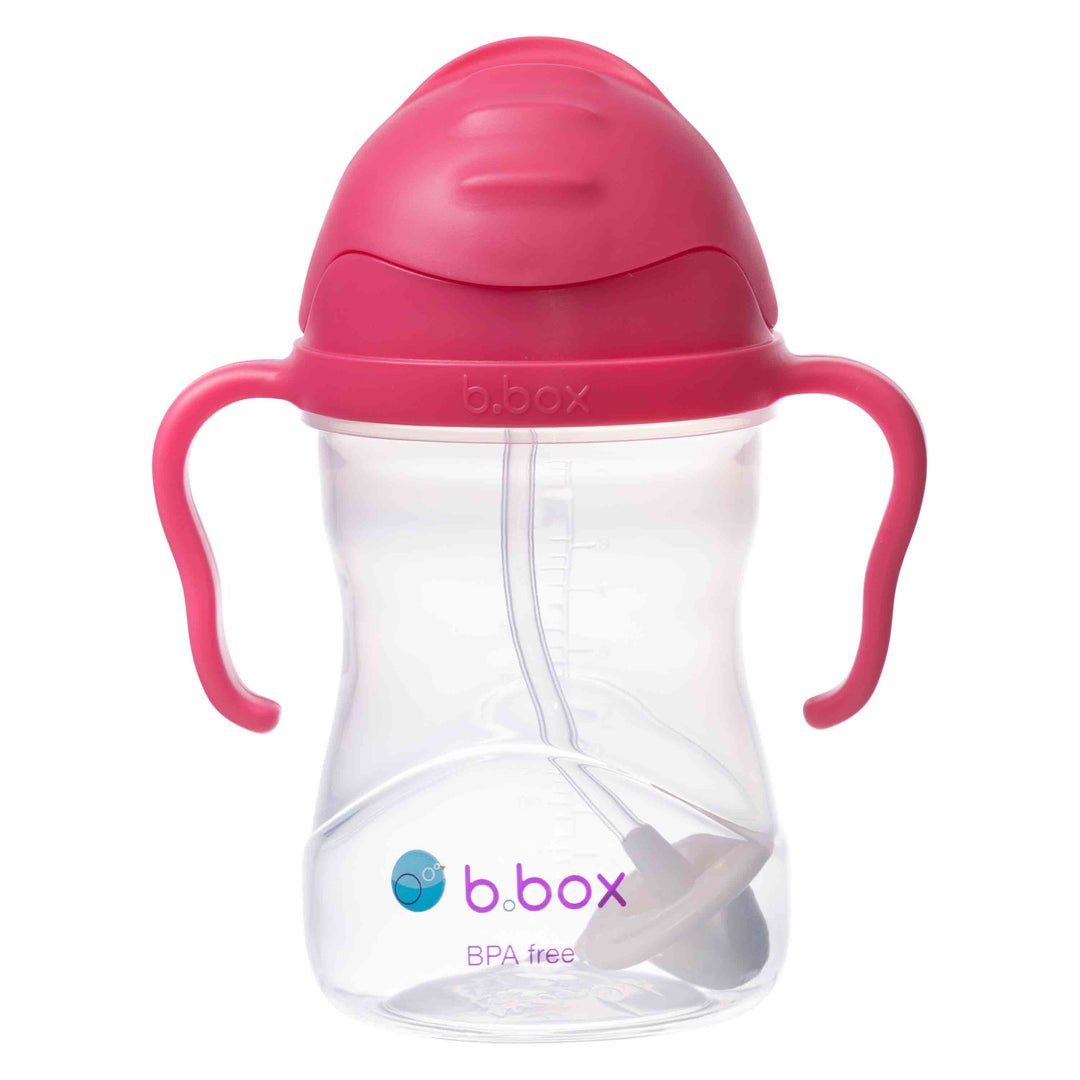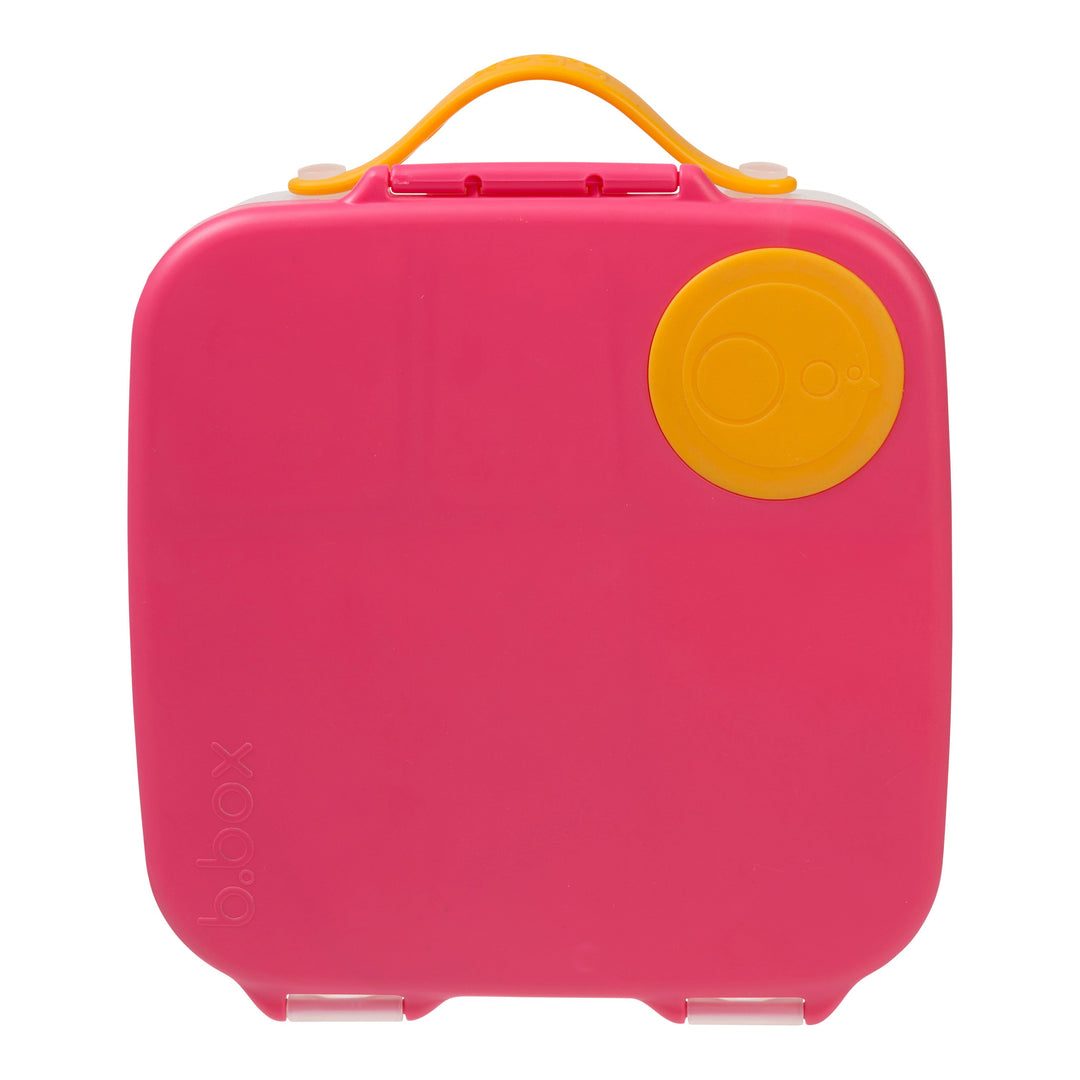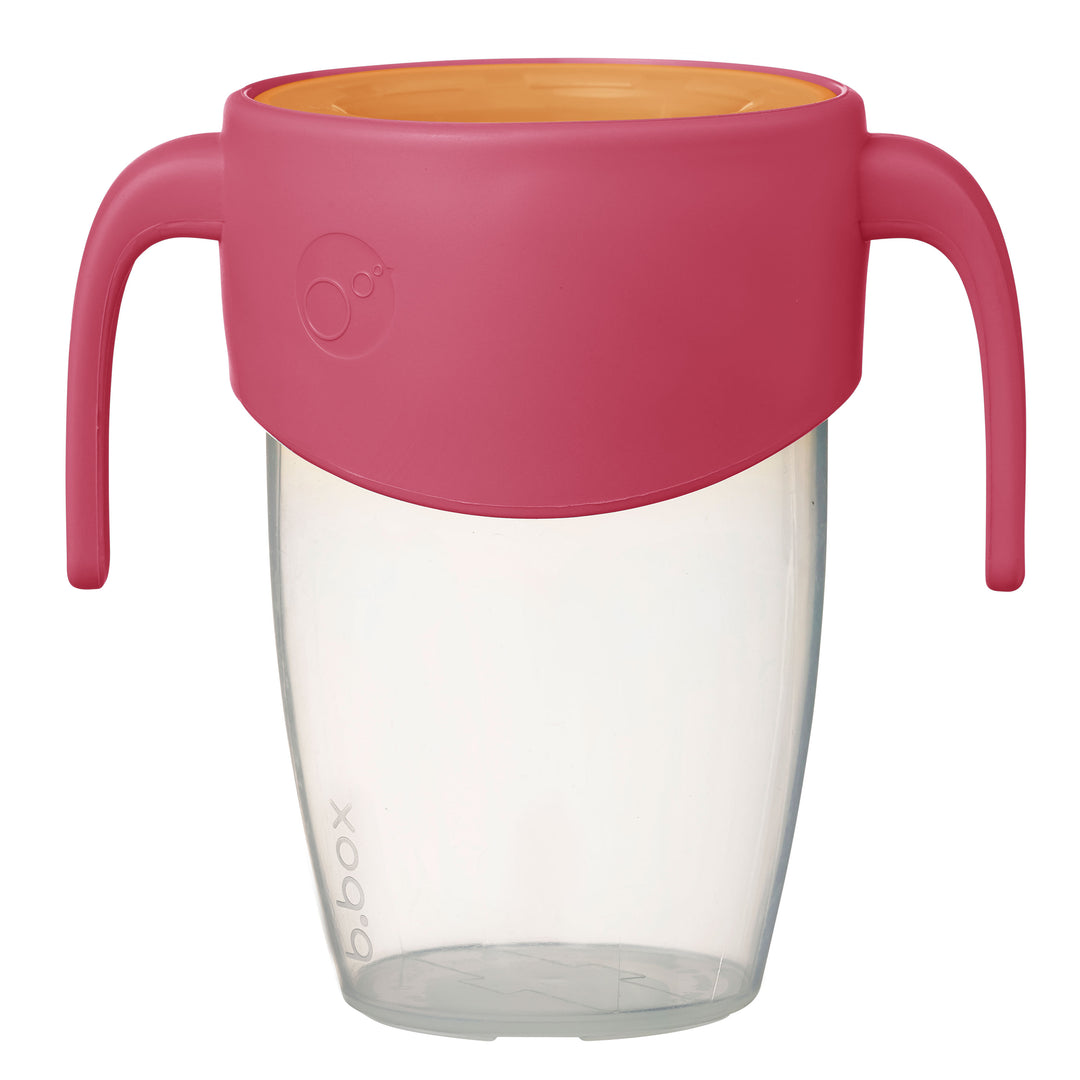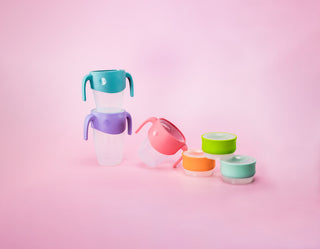It’s time to make a change—or is it? Knowing when to transition your baby from a bottle to a cup can be tricky. The American Academy of Pediatrics recommends weaning children off bottles between 12 and 24 months. But how do you start, which cup should you use, and what if your baby hates drinking from a cup?
We’re here to help with this guide to when, how, and why you should switch from a bottle to a cup. Read straight through for the whole crash course, or use the links below to skip to the information you need.
- when to transition from bottle to cup
- problems with extended bottle usage
- what should your infant be drinking from a cup?
- how to transition from a bottle to a cup
- the best cups to transition from a bottle
- what about breastfeeding children?
- from one parent to another: here's how I made the switch
- what if my child hates drinking from a cup?
when to transition from bottle to cup
According to the experts, your child should be fully weaned from a bottle sometimes between 12 and 24 months. But you can start introducing a cup as young as six months old—about the time your child can start sitting in a high chair and trying solids. In fact, establishing an early habit of drinking from a cup at mealtimes in the high chair is a great way to set yourself up for success when it’s time to fully wean.

Little Mira rocking her cup transition! Credit: @the.smith.loves
problems with extended bottle usage
Weaning your baby off their bottle may feel like a big deal—maybe even intimidating. So, why is it so important?
There are a few problems associated with extended bottle usage, including:
- Dental decay
- Poor eating habits
- Greater difficulty transitioning as your child ages
The other incentive? If you use a daycare facility, your child’s school likely has a no-bottle policy at a certain age. When my daughter aged out of her infant class, she was no longer allowed to use bottles at school. It became important for her to learn to use a cup pretty quickly!
what should your infant be drinking from a cup?
For the first year of their life, your baby’s primary source of nutrition is breastmilk or formula. That said, it’s okay to introduce small amounts of water to infants beginning at six months (no more than 4-8oz per day). So, if you’re introducing a cup before one year, you have a couple of options:
- Breastmilk
- Formula
- Small amounts of water
What about juice? The AAP recommends avoiding juice altogether before 12 months and limiting daily juice intake to 4oz for children aged 1-3. Other sugary beverages (like soda) should be avoided.
After your child’s first birthday, you may choose to offer more water or a small serving of milk in their cup.
how to transition from a bottle to a cup
We’ve covered when to switch and why it’s important…but how do you do it?
Generally speaking, there are two broad strategies:
1. quit bottles cold turkey
Set a date and stick to it! Switch all of your child’s bottles to cups. Even if they won’t accept the cup at first, they will eventually figure out that milk/water only comes from a cup.
This tends to work quicker than you might think and could be a solid strategy if you need to quickly switch from bottle to cup. To increase your chances of success, try the following tips:
- Keep all the bottles out of sight
- Serve the cup with meals when your child is sitting in a high chair
- Try different kinds of cups to see if your child gets excited about a particular kind
2. gradually wean
Start by replacing one bottle feed with a cup. If your child gets upset, try again with the next feed. Once you have one feed replaced, continue to replace the other bottle feeds.
If your child has already reached their first birthday, they may begin to naturally drop bottle feeds. In this case, you’ll want to serve them a cup at mealtimes, while they’re sitting in their high chair.
the best cups to transition from a bottle
When you finally wave “bye-bye” to the bottle, the best cup to use is the one that works best for your family. It’s an annoying answer, but it’s true. You may find you want to skip straight to an open cup—or find something that meets you in the middle (that’s what I did).
My personal favorite is the b.box for kids 360 cup. It mimics an open cup by allowing young toddlers to drink from anywhere around the rim—but the silicone lid prevents spills.
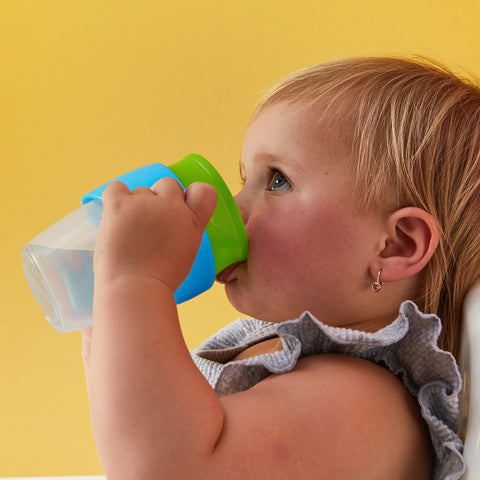
The coolest part? Flip the handles down and the cup becomes leakproof. So, you can toss it in your diaper bag or stroller without worrying about the mess.
If you’re not quite ready for an “open cup” design, there are a couple more great options aside from the 360 cup:
- b.box for kids sippy cup: features a weighted straw for easy drinking from any angle
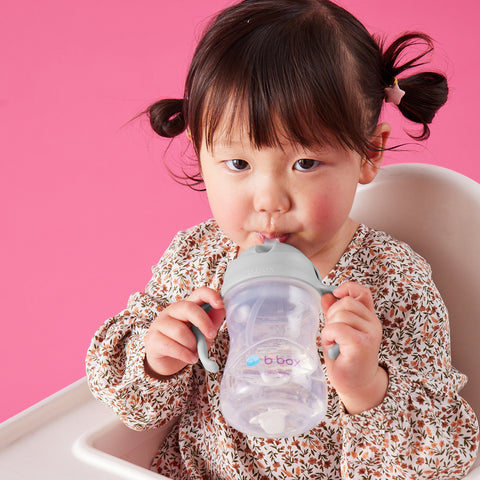
- b.box for kids training cup: features a lid that mimics an open cup with a base that’s compatible with the sippy cup spout
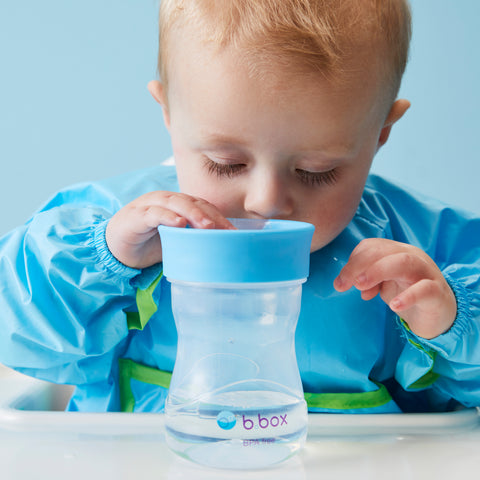
Pro tip: Use the b.box for kids transition pack to get four lids that all fit with one base. You’re covered from infancy through toddlerhood with a:
- Baby bottle attachment
- Spout lid designed like a traditional sippy cup (4 months+)
- Weighted straw lid (6 months+)
- Training lid (mimics an open cup; 6 months

Check out these transition suggestions according to dental development!
should you switch to a sippy cup?
Sippy cups certainly could be the best option for your family! It depends on your child’s individual preferences and needs. Some parents skip the sippy cup stage in favor of introducing an open cup right away. But others find sippy cups are a great first stepping stone away from a bottle. Modern sippy cups provide handy features like weighted straws, and they certainly help to minimize the mess.

credit: @mama.and.her.minis
Keep in mind that most experts agree your child should move on from a sippy cup by age two or three. And, if you send your child to daycare, you may find they end your child’s relationship to their sippy cup before you intend to do it. My daughter—who is two—is required to drink from an open cup (and she does quite well with it!). That said, we still use her favorite sippy cups at home—and we’re okay with that.
The best sippy cups have these features:
- Leakproof: You need a cup that can handle being tossed, jostled, and shaken without making a mess.
- Easy to clean: Dishwasher safe? Yes, please!
- Nontoxic: Look for sippy cups that are BPA and phthalate-free.
- Weighted straw: Sippy cups that feature a traditional straw (as opposed to a spout) better prepare your child for cups they’ll continue to use down the road. A weighted straw keeps liquid flowing even if your young toddler is holding the cup upside down (without causing major spills).
what about breastfeeding children?
Maybe your child has never taken a bottle in the first place. In that case, there’s no need to transition, but you’ll still want to help your child learn to use a cup. You can start offering breastmilk or small amounts of water in a cup at six months. Experiment with different types of cups—if you’re okay with a bit of a mess, you can opt for an open cup. Or, start a bit slower with a 360 cup.
Even if you choose to breastfeed past one year, it will be helpful for your child to know how to drink from a cup when he or she’s not nursing.
from one parent to another: here’s how I made the switch
There are many guidelines, strategies, and products to consider. So from one parent to another, here’s exactly what I did. Note that all children are different, and I am not a medical professional, but I find having a personal example sometimes helps.
I began introducing my child to an open cup around 6 months old at mealtimes, but she continued to regularly nurse and take a bottle. We transitioned from breastmilk to formula at eight months, and she continued to take a bottle.
Between 9 and 12 months, she began to show less enthusiasm for bottle feeds, and she started to follow more of a meal/snack time schedule, which made it easier to continue making the switch from bottles to cups.
At one year, she used a cup at school, and we had weaned her bottle usage to one bottle before bedtime.
By 18 months, she was 100% weaned off bottles. But she continued to enjoy a cup of warm milk before bed at night. Now, she mostly drinks water if she asks for a nighttime drink.
Even though we started by introducing an open cup, she now uses a mix of open cups, 360 cups, and cups with straws. That said, she is excellent at using an open cup now, and we rarely deal with spills.
Honestly, the whole transition was less painful than I thought it would be and I’m hopeful it’ll be the same for you!
what if my child hates drinking from a cup?
The transition might feel a little tough at first. If your child becomes upset when you take away the bottle, try to gradually wean and follow their lead. If your child turns 2 and still hasn’t weaned, ask your doctor for help. In the meantime, check out some of the resources below:
resources for switching from bottle to cup
meet b.box for kids
Curious about the brand I mentioned a few times in this article? You should be! b.box for kids originated in Australia, where they built a loyal base of mom-fans. Now, you can buy their lunch and hydration products in the U.S. They always have the extra thing parents are looking for—for example, the leakproof seal in the 360 cups, the weighted straw in the training cups, or the whole-fruit-sized compartments in their lunch boxes. Click below to see for yourself!
